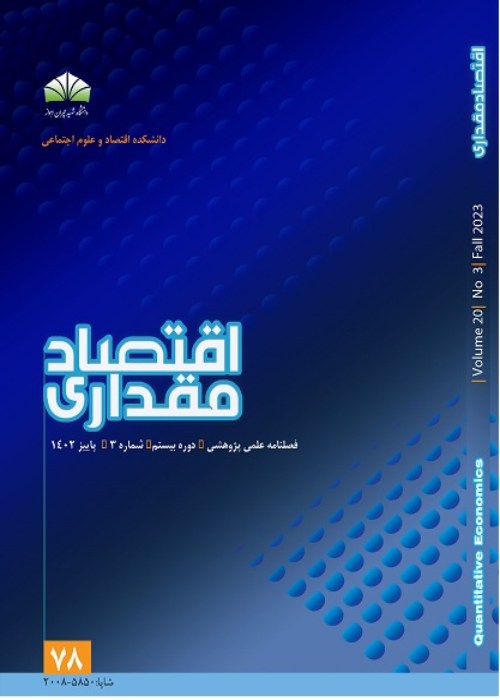Transition Dynamic Analysis of the Regional Disparity in Iran (Case Study: Iran Provinces)
The usual methods of measuring regional inequalities can not reflect the internal changes of the country in terms of displacement in different development groups. Thus, the indicators of inequalities are not effective in demonstrating the dynamics of the distribution of inequalities. For this reason, this paper examines the dynamics of the regional inertial transport in the country during the period of 2006-2016 using the CIRD multidimensional index and stochastic kernel density method. To that end, 25 indicators were selected in five dimensions including macroeconomic conditions (MEI), science and innovation (SII), environmental sustainability (ESI), human capital (HCI) and public facilities (PFI). In turn, a two-stage Principal Component Analysis (PCA) methodology was developed to create a composite index of inequality. Then, in the second stage, using a nonparametric analytical approach to internal distribution dynamics and a stochastic kernel density method, the convergence hypothesis of the CIRD index of the Iranian provinces was tested. Afterwards, based on the ergodic density, the long-run equilibrium was shown. At this stage, to adopt the most accurate regional policies, the distribution dynamics and the process of convergence or divergence of the Iranian provinces for each of the five dimensions in three successive periods (2006 and 2016) were studied separately. According to the results of the first stage in 2006, the highest level of development was related to Tehran province, followed by Semnan, Yazd and Markazi provinces. In turn, Sistan and Baluchestan province had the lowest level of development. In 2016, the highest level of development and the highest positive inequality were in Tehran, Yazd, Semnan and Isfahan provinces and the lowest level of development was in Sistan and Baluchestan, Chaharmahal and Bakhtiari, North Khorasan and Kurdistan provinces. The results showed that the central provinces of the country were at the highest level of development due to the effects of Tehran's knowledge spillover, while the country's lower provinces were at the lowest level of development. The main reason for this may be due to the lack of access to the markets in the border provinces. Based on the results of the second stage, which examines the dynamics of regional inequality transmission in the country during 2006-2016, the first year (i.e., 2006) was not multifaceted and according to the kernel density graph, the CIRD index of about 70% of the provinces was between -1.1 and -0.1. The rest of the sequence on the right was distributed at a level higher than -0.1. In the kernel distribution, a convergence process was observed. One peak was about 1 and the other about 3, but the main peak remains at -0.6 with about 55 percent of the provinces. In the second year (i.e., 2011), according to the kernel density diagram, the curve clearly showed the pattern of the triplet nature and there was a small but a clear increasing trend in the distribution of this year relative to 2006. In this year, the previous uniform distribution is divided into two parts at the highest level, one peak at about 1 and the other at about 3. However, the main peak remains the same at -0.6 with approximately 55% of the remaining provinces. In 2016, the multidimensional pattern remained constant and there was no mobility in the lower level groups. On the contrary, at the higher level, the CIRD index accounted for about 45% of the provinces at about -0.4. This year clearly faces the twin density pattern, indicating that the provincial provinces tend to be closely related to each other in terms of development. This way, the provincial provinces are low in terms of development. The findings tend to be -0.6 and the value of the more developed CIRD index tends to be about 0.4. These three curves show that the provinces tend to converge toward several different CIRDs in terms of development. Moreover, according to the distribution dynamics results, the provinces of Iran followed the single-density pattern in 2006. However, in 2016 they followed the double-peak density pattern in low and moderate inequality index levels as well as in the development index. In conclusion, the country diverged during the years 2006 to 2016.
- حق عضویت دریافتی صرف حمایت از نشریات عضو و نگهداری، تکمیل و توسعه مگیران میشود.
- پرداخت حق اشتراک و دانلود مقالات اجازه بازنشر آن در سایر رسانههای چاپی و دیجیتال را به کاربر نمیدهد.


